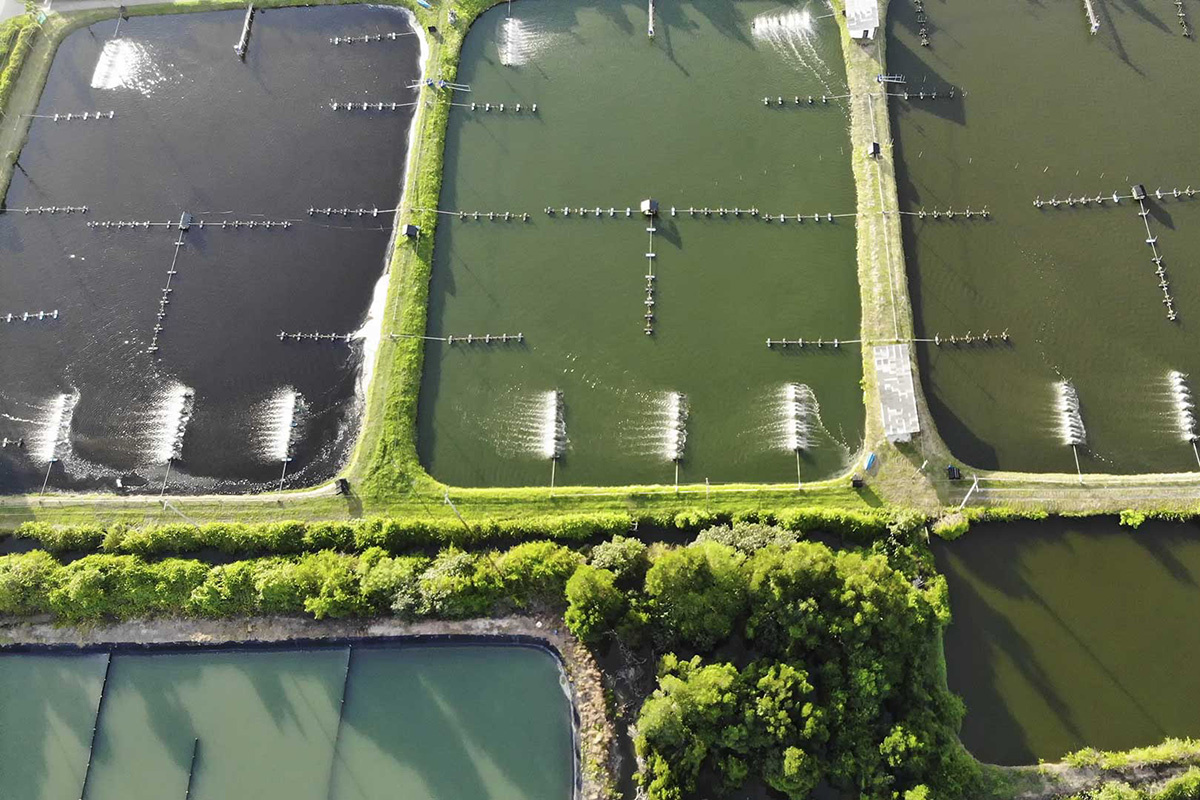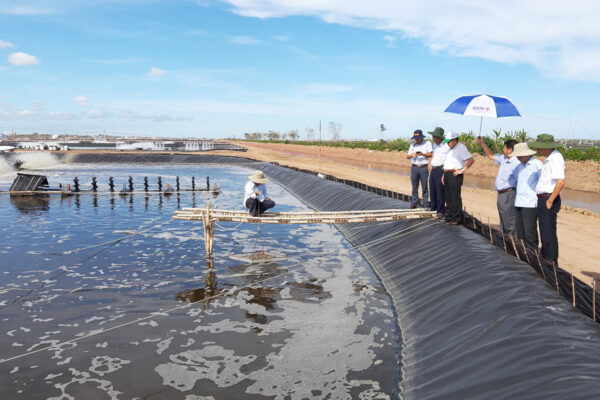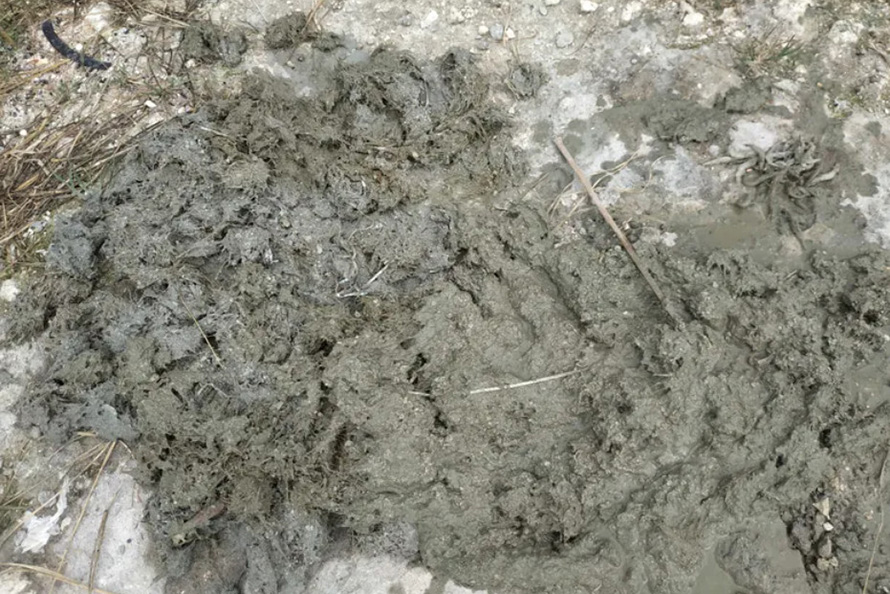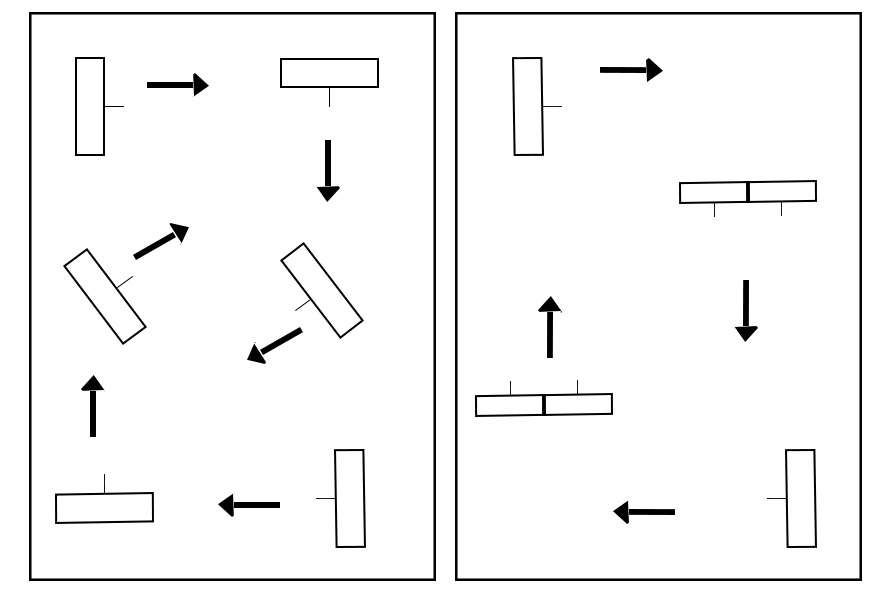
Mud and other residues accumulated in the pond bottom during the culture process are the main causes of shrimp pond pollution and the generation of pathogens. Good management of bottom sludge contributes to the protection of shrimp health.
Shrimp ponds accumulate a lot of organic matter from uneaten food, manure, plankton carcasses, and fertilizers. In farming models such as earthen ponds, vermicelli can also arise from other factors such as erosion of pond banks due to runoff and rain. Over time, they gradually settle in the pond bottom in the form of sludge. If not managed well, bottom mud can cause many problems, such as increasing ammonia levels, decreasing dissolved oxygen (DO) and rapidly degrading water quality in ponds.
Therefore, farmers need to manage pond bottom well to ensure stable environmental parameters and protect shrimp health. Here are some measures for effective pond bottom management:
1.Pond lining
This helps to ensure biosecurity and minimize the impact from the pond’s soil. In earthen ponds, on the pond bottom often occurs the process of anoxic respiration of microorganisms. This process produces toxic gases that seriously affect the health of shrimp. Using plastic sheets (HDPE) will make it easier to control these toxic gases.

Using pond liners can improve biosecurity and make pond bottom management easier. Photo: Phuong Nghi Although the pond lining is highly effective, but with the current state of environmental pollution, using composite and plastic tanks is said to be the most optimal solution for this problem.
2.Reasonable Pond design
Ponds are usually shaped like circles, squares, and rectangles. The shape of the pond has a great influence on the flow and sedimentation at the bottom of the pond. Each shape has its pros and cons, but round and square ponds allow good water circulation, making waste collection easier.
Siphon is said to be an effective solution in treating waste deposited in ponds. To facilitate waste collection, siphon pits should be located in the center of the pond. It is recommended to siphon the bottom once a day or at least twice a week, in the morning before the first feeding to remove excess food, feces, plankton carcasses or dead shrimp that may present.

3.Arrange the water fan efficiently
There are two main notes when using a water fan: The number of machines to use and the layout. The size of the pond and stocking density are two factors that determine the number of machines needed. According to the author, for a pond of 1000 m2 with a stocking density of 100 PL/m2, the number of water fans should be installed to achieve a total capacity of 6HP.

The arrangement of water fans must ensure that the machine’s operating range covers all locations in the pond. There are two common types of layouts: parallel layout and diagonal layout. The parallel arrangement is said to be ineffective because it does not cover all points in the pond. A 2018 study by Professor Jaqueline showed that the diagonal layout helps to concentrate waste more efficiently and create a higher amount of dissolved oxygen.
4.Check the pond bottom periodically
During shrimp farming, it is important to evaluate and test the bottom sludge to prevent its negative effects. This can be done by sampling the sediment in situ and measuring the amount of sludge as well as the following four parameters: pH, redox potential (ORP), H2S, and NH4-N.
Sampling should be done at least twice a crop, in the middle of the growing season when the bottom sludge starts to form and at the end of the growing season. When shrimp die, low water quality or shrimp grow slowly, bottom sludge sampling should also be done to determine the exact cause.
5.Periodic use of chemicals and biological products
These products promote decomposition and increase the oxygen concentration at the bottom of the pond, helping to effectively treat organic waste accumulated on the bottom. Probiotics are known for many benefits in shrimp farming. They can also treat sediment build-up at the bottom of ponds by promoting nitrification, which converts ammonia into nitrites and nitrates. Helps to significantly reduce toxic levels in sludge.
KMnO4 is also considered an optimal choice because, it allows waste to decompose quickly. The treatment capacity of KMnO4 depends on the water conditions in the pond, the level and load of the sediment. The recommended dosage is 2-4 mg/L.
In addition, farmers can also use H2O2, which is a strong oxidizing agent that allows decomposition and the release of oxygen at the same time. It is estimated that 1 mL of H2O26%, will provide 3 mg/L of dissolved oxygen (DO). However, the safe threshold for using H2O2 supplemented with DO in ponds is not to exceed 0.0143ml H2O2/L.
6.Mapping the locations of bottom mud formation
Setting up a map helps farmers find the causes and solutions as well as pay attention to manage the points where waste is concentrated a lot. The map should be designed according to a certain scale and use colors to classify the thickness and sparseness of the bottom mud at each location. The formation of bottom sludge is closely related to the quality management of the pond. Stable water quality in the pond will help limit the formation of bottom sludge.
Source: thuysan247.com

 Tiếng Việt
Tiếng Việt Indonesia
Indonesia